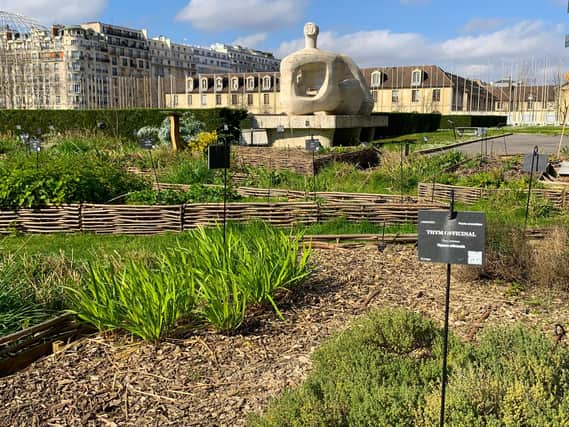Homo urbanus is starting to evolve - May East


A study published in Nature estimates that globally, there are 3.04 trillion trees. This means that there are roughly 422 trees for every person on earth. The study also reveals that the total number of trees has fallen by approximately 46 per cent since the beginning of human civilisation. This decrease is particularly evident in urban environments where we have positioned ourselves as homo urbanus, apparently above and apart from nature. However, this trend has begun to shift with urban ecologists, planners, residents, and city councils adopting ecosystem-based approaches to enhancing local biodiversity ranging from tree planting to the creation of urban gardens.
For instance, Unesco headquarters in Paris has recently turned its garden of historical significance permeated by oeuvres by Henri Moore, Takis Vassilakis and others, into a ‘jardin potager’ – an edible landscape with over 140 types of aromatic and medicinal herbs, vegetables and fruit trees. The aim is to bring culture-back to agri-culture, providing seasonal inspiration to in-house chefs and a space for international civil servants to nourish body and mind.
Advertisement
Hide AdAdvertisement
Hide AdWhen it comes to considering how many trees should exist for each person in urban areas, I am fond of the proposition suggested by Dutch ecologist Cecil Konijnendijk enshrined in the ‘3-30-300 rule’. This stipulates that everyone should be able to see at least three trees from their home; there should be 30 per cent tree canopy cover in each neighbourhood; and 300 metres should be the maximum distance to the nearest high-quality public green space.


In New York, since 2016 there has been an estimated 20 per cent increase in forest cover, offering New Yorkers an escape from the concrete jungle and helping to cool the city. A recent initiative following on Million Trees NYC, aims to plant an addition one million trees in five boroughs. For years I supported a similarly ambitious project in urban greening, to transition Vila Brasilândia, considered the largest slum in South America, into resembling a 20-minutes neighbourhood. Their campaign ‘The Forest Invades the City’ was designed to redirect the trend of predatory human occupation of São Paulo green belt by planting native trees, installing green roofs, and growing edible plants in abandoned public squares.
Another recent example can be found in Madrid, which is looking to build a green wall around the city in the form of a 75-kilometre urban forest, with nearly 500,000 new trees planted to improve the air quality and lower temperatures. When planted and matured, it is hoped that it will absorb 175,000 tons of greenhouse emissions each year and connect to the surrounding forests.
Nearer home, during recent walking interviews I conducted in Edinburgh, women in Portobello told me about their desire to help design nature corridors, linking parks and playfulness with woods, orchards, and burns to the larger landscape of sea and hills. Brunstane Burn was suggested as a route that runs from Arthur’s Seat all the way to the sea, with one woman describing it ‘as a broken corridor, but when connected ecologically and socially could be brilliant’. Indeed, Brunstane Burn ‘is a huge asset from where the other parks could weave off from’.
From a leafy neighbourhood in Edinburgh to a slum in São Paulo, UNESCO to Manhattan, many are beginning to awaken to the biocentric fact that we are one of the many species in the co-evolving web of life. By restoring the existing connections between individual trees, urban woods, green spaces, burns, allotments, and the soil beneath the vegetation, we can support our cities to reduce greenhouse gas emissions, hold back extreme heat, bring back biodiversity, and enrich our urbanised lives.
May East, UN House Scotland Coordinator of Cities Programme
Comments
Want to join the conversation? Please or to comment on this article.